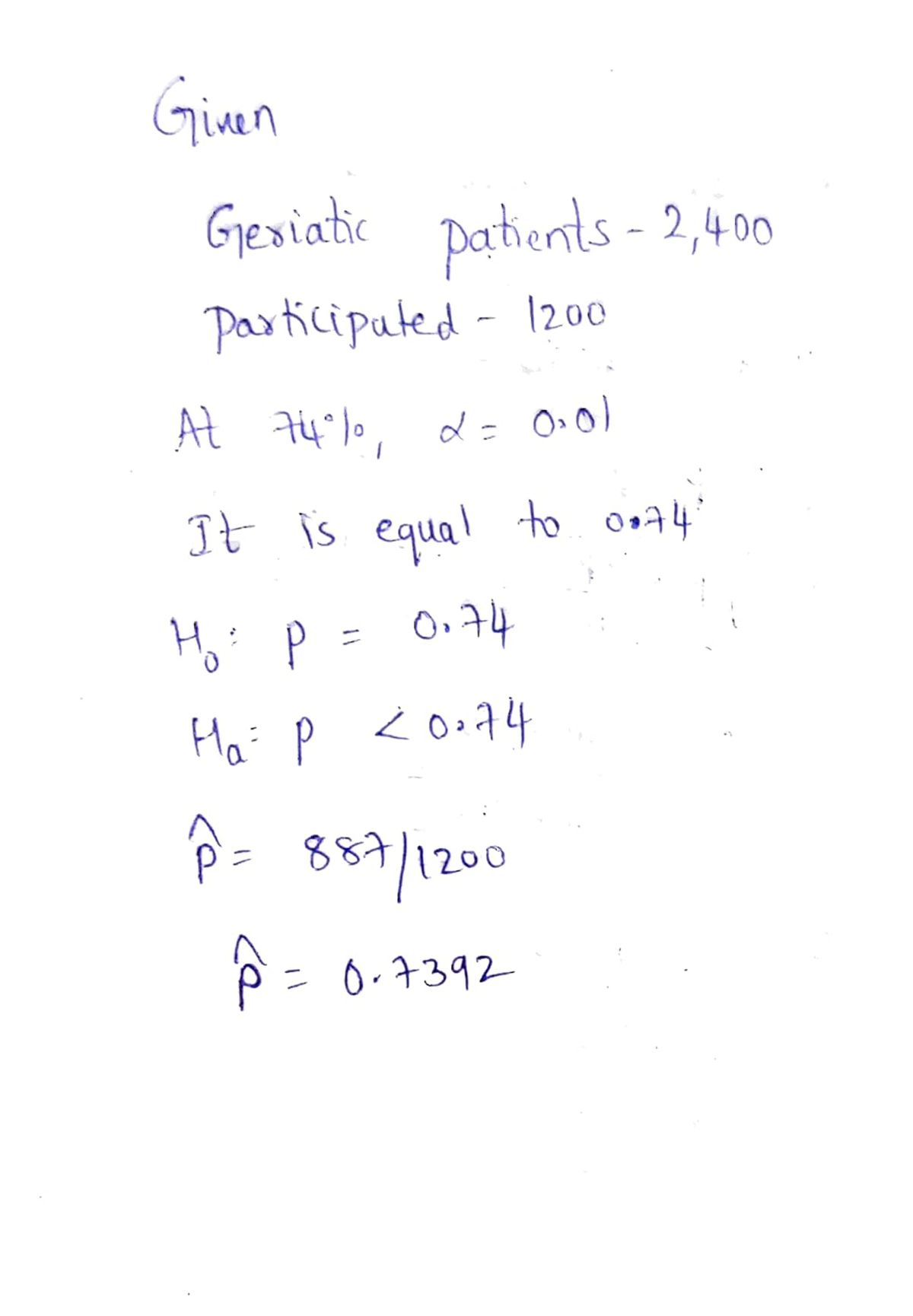We have a sample of 2,400 geriatric patients who are in an assisted living home, of which 1,200 participated in a new preventative Drug A. Rates of UTIs tend to be higher than average among this population. As part of a preventative and treatment intervention, we are examining the performance of several drugs: Preventative Drug (before the onset of UTI) Drug A: preventative UTI drug taken daily in hopes to prevent the growth of bacteria that causes UTIs Treatment Drugs (after the onset of UTI) Drug B: New antibiotic for treating UTIs Drug C: Conventional antibiotic
We have a sample of 2,400 geriatric patients who are in an assisted living home, of which 1,200 participated in a new preventative Drug A. Rates of UTIs tend to be higher than average among this population. As part of a preventative and treatment intervention, we are examining the performance of several drugs: Preventative Drug (before the onset of UTI) Drug A: preventative UTI drug taken daily in hopes to prevent the growth of bacteria that causes UTIs Treatment Drugs (after the onset of UTI) Drug B: New antibiotic for treating UTIs Drug C: Conventional antibiotic
A First Course in Probability (10th Edition)
10th Edition
ISBN:9780134753119
Author:Sheldon Ross
Publisher:Sheldon Ross
Chapter1: Combinatorial Analysis
Section: Chapter Questions
Problem 1.1P: a. How many different 7-place license plates are possible if the first 2 places are for letters and...
Related questions
Question
We have a sample of 2,400 geriatric patients who are in an assisted living home, of which
1,200 participated in a new preventative Drug A. Rates of UTIs tend to be higher than
average among this population. As part of a preventative and treatment intervention, we are
examining the performance of several drugs:
Preventative Drug (before the onset of UTI)
Drug A: preventative UTI drug taken daily in hopes to prevent the growth of bacteria that
causes UTIs
Treatment Drugs (after the onset of UTI)
Drug B: New antibiotic for treating UTIs
Drug C: Conventional antibiotic for treating UTIs
Information for how many patients took each drug or combination of drugs is
summarized below in the two tables. Use these to answer questions a) -d)
Table 1. Summary of performance of drug A: UTI rates among those taking and not
taking drug A
Did not take Drug A Did take Drug A Total
UTI 759 887 1646
No UTI 441 312 753
Total 1200 1200 2400
Table 2. Summary of performance of drug B and C: recovery status after 1 week of
taking medications.
Did not take Drug A Did take Drug A
Drug B Drug C Drug B Drug C
Recovered 191 209 221 244
Not Recovered 189 170 223 199
Total 380 379 444 443
a) Use the above Table 1 to determine if Drug A was useful in preventing UTIs. In other
words, is the proportion of those having taking Drug A but still getting a UTI equal to
average rate of UTI for this population (living in an assisted living home) of 74%. Use
hypothesis testing to test our hypothesis and use the confidence interval approach with a
significance level of α=0.01.
b) Using Table 2, let’s examine the rate of UTI recovery among Drug C (conventional
antibiotics). The manufacturer of Drug C claims it has a success rate (recovery within a
week) of 55%. Use our data to see if this success rate is true: test if our recovery rate of
those taking Drug C, regardless of whether the person took Drug A or not, is the same or
different than 55%. Use hypothesis testing and the p-value approach with an α=0.05.
c) Similarly, let’s examine Drug B’s performance. Repeat our hypothesis among Drug B:
test if our recovery rate of those taking drug B is different than 55% (regardless of
whether the patient took Drug A or not). Use hypothesis testing and p-value approach
with an α=0.1.
Expert Solution
Step 1

Trending now
This is a popular solution!
Step by step
Solved in 4 steps with 4 images

Recommended textbooks for you

A First Course in Probability (10th Edition)
Probability
ISBN:
9780134753119
Author:
Sheldon Ross
Publisher:
PEARSON


A First Course in Probability (10th Edition)
Probability
ISBN:
9780134753119
Author:
Sheldon Ross
Publisher:
PEARSON
